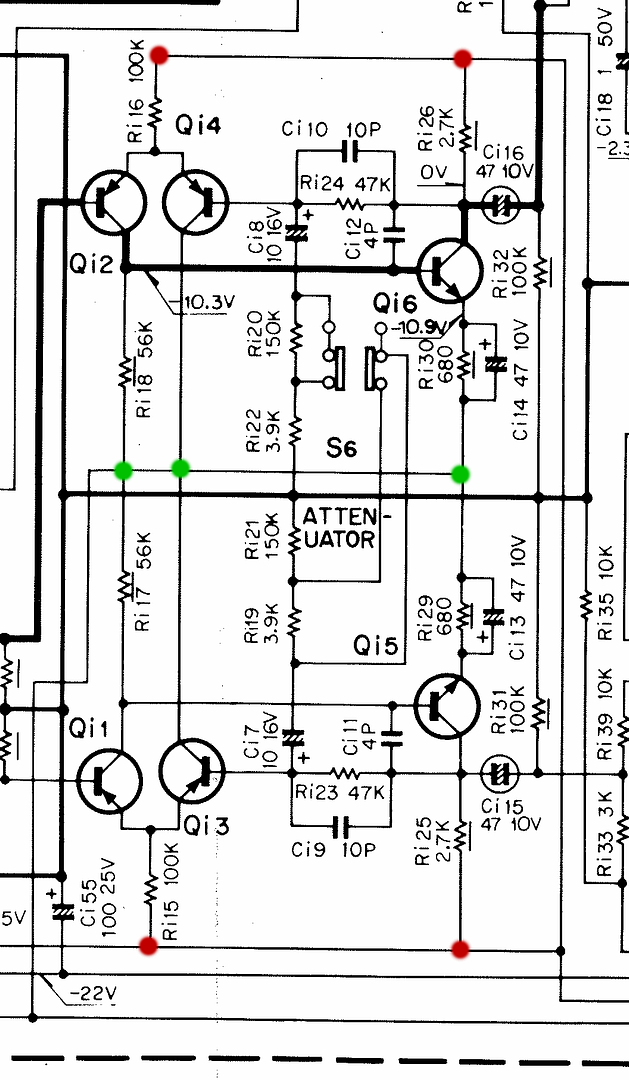I was kept very busy yesterday and had no opportunity to get any parts. All I've been able to do since last posting was replace all of the transistors (on this half of the control board) and install those 1uF stacked film capacitors at Ci5 & Ci6.
According to data sheets, the 2SA970 transistors I used have the same pinout as the 2SA640 (which the factory used instead of 2SA763). I installed them as per the hole markings on the foil side of the board. Except I may have screwed up on Q11 & Q12. I say that because the foil side at those positions did not have holes marked ECB. When I pulled Q11 I failed to note how it was oriented because I expected its holes to be marked (as were all the others) but this was not so. All I can determine is that Q11 & Q12 share a Collector connection but since that's the center leg, I figure my chances of having gotten it right are 50/50. Both transistor housings are "facing" in the same direction.
Regarding voltage measurements at R16 & R26 / R15 & R25:
R16 & R15 are horizontal so I was unsure what was the "top side" which you referred to so I took measurements on both sides. A little over 9 volts on one end and about .570 volts at the other.
R26 & R25 seem to be nonexistent. There is a position silk screened R25 but it is vacant and I could not find R26 marked anywhere on the board.
What may or may not be relevant is when I connected the mini grabber to R15, I heard the radio station and the volume control was down to off. .
Despite what I've done thus far, new transistors and two 1uF stacked film caps, nothing has changed. Still a weak left channel yet strong on the right but accompanied by the radio station whenever I touch the volume control.
If you think it worthwhile, I shall continue with replacing all the capacitors on the board as soon as time will allow and I can get to the parts store.
At the top, I mentioned this half of the board. There is also the other half - the tone control half. Since installing new electrolytitcs on it, I have paid it no further attention.


 Takes time. hang in there.
Takes time. hang in there.